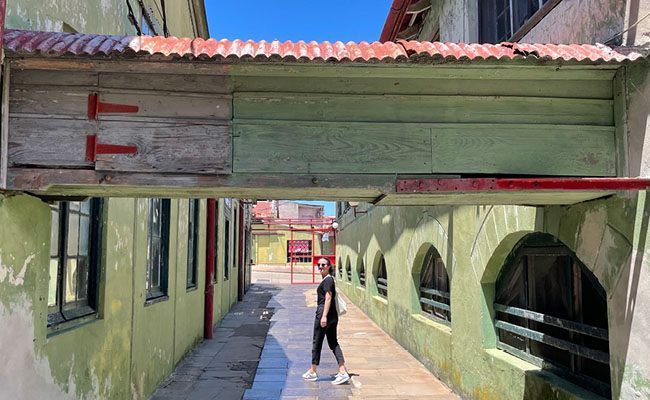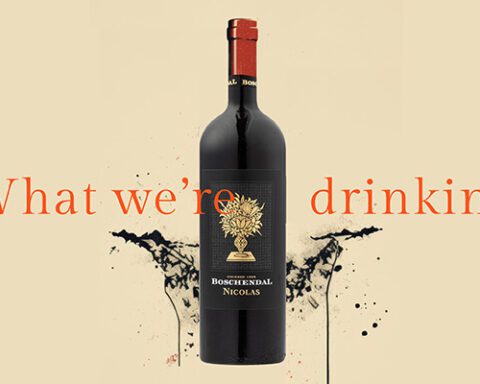That name. When you first see it on a map, you think, nope, can’t be. Read it again. Check the spelling. Then it activates the palate’s version of muscle memory, a mouth that very nearly waters. Not craving it, but certainly remembering that salty taste of an unimaginative sarmie. A throwback to a time before umami was part of your vocabulary. The question inevitably follows: why would a town in Uruguay be called Fray Bentos?
If you are on the Gen X side of millennial, those two words should ring a bell. It was that beefy spread in the old-timey jar, long since rebranded Oxo and discontinued in South Africa altogether about a decade ago. The most bizarre relic from a 1980s childhood to pop up in Latin America.
Traveling is always a juggling act – any change in the itinerary means sacrificing one sight to see another. But here is the thing, if you stumbled across a place called Marmite, you would check it out. Same goes for Bovril, if it was a town. Then why not Fray Bentos? A quick google even revealed it to be one of Uruguay’s three Unesco World Heritage sites. It should be worth a four-hour bus ride, a sleepover, and a return.
The alternative was to stay put in “very liveable” Montevideo. Four days, though, had already been enough to walk the entire Rambla, a promenade the length of a half marathon, and dodge each of its joggers, strollers and rollerbladers. Also ample time to explore the capital’s other quirks: a ship-shaped house with a sea view, a palatial office-and-flat block that is the non-identical twin of a building in nearby Buenos Aires, and a walk of fame that places Nelson Mandela’s star next to no lesser celeb than Enrique Iglesias. Also, for those interested in the technicalities of cannibalism there is a museum dedicated to that famous 1970s Andes plane crash later Hollywoodified as Alive! starring Ethan Hawke.
Montevideo is not the coolest kid in school, but the guy you visit because of his mom. A home always stocked with freshly baked goods thanks to the Tannie’s kitchen prowess. Your playdate with this city is mostly about the sweet stuff. Walk a few blocks and you’ll find a street vendor deep-frying bread dough and sowing plain old cane sugar over it, offering you a torta frita for the equivalent of R10. Quince-filled pies are an afternoon staple. And at just about every tearoom or coffeeshop or hole-in-the-wall bakery you’ll be sold an alfajor (pronounce that j like the g in dagga). Just like in Argentina, this the most magical pair of sweet maize biscuits glued together with an addictive milk caramel called dulce de leche. An enjoyable snack, for sure, but not enough to sustain you for long. Which is probably an apt metaphor for Uruguay’s capital.

‘Boereguay’
Fray Bentos, if the brand name is anything to go by, you would expect to be less sweet. It promises something Montevideo has simply never had: global significance. Think of it as a South American Kimberley or even a Joburg – the quintessential 19th-century boomtown – but instead of diamonds or gold, it had a bottomless mine of meat.
On the bus, pulling out of Montevideo you can’t help but wonder about the fact-checking when it comes to naming places. If the city’s name really means “I see the hill”, you have to ask, broer, where? Uruguay is one of the flattest countries in the world, with the highest point a mere 513m above sea-level. The rest of it is, well, platteland. Pastoral to the extreme, like one massive farm. (Coining it now: Boereguay.)
Switch on the TV and you’ll find agriculture in one form or another on four of the channels. Seeing okes in two-tones speaking Spanish is in a sense quite disorienting, but there they are chatting away about sugar cane or citrus or wine grapes or, more importantly, cattle.
Some of the world’s best grazing grassland – the pampas – covers about 2% of neighbouring Brazil and more than 10% of Argentina, but all of Uruguay. So good was the cow food that by the 19th century the region had developed a roaring trade in hides. The leather went to markets in Europe, but the meat would spoil long before it could reach consumers. The Uruguayans did their part, and if you ask them today, they still claim to be the biggest meat-eaters per capita in the world. But braai as you may, many tons of meat still went to waste.
And so, some time before they had beef of their own, a German-British alliance solved the problem. Organic chemistry legend Justus von Liebig, after making his mark in plant nutrition, turned to meat processing. He developed a method to concentrate beef down to an extract that lost very little of the good stuff. His process was basically fat-trimming, pulping and slow-boiling entire bulls and cows until they could be put in jars and shipped off.
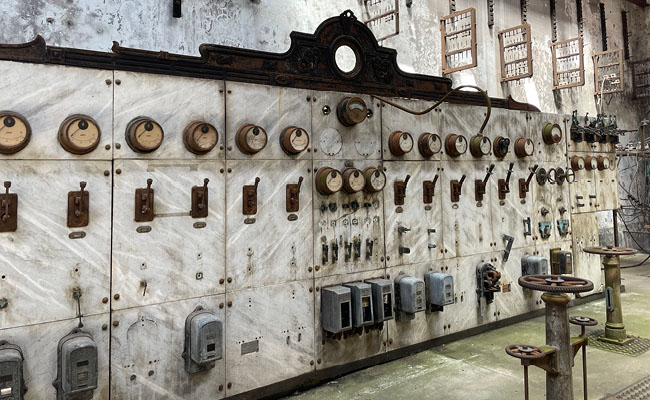
Liebig wanted the poor and downtrodden, who had been flocking to cities as the Old World industrialised, to have a reliable and affordable source of protein. But rearing cattle in Europe was just too expensive to make it a viable proposition, so in the late 1840s he made his invention publicly available and undertook to go into business with whoever could come up with a cost-effective model.
Nearly two decades passed before George Giebert, an engineer who had done work in South America came up with the plan to take a punt on the pampas where mountains of meat were a byproduct of the leather trade.
Funding the whole enterprise was, of course, capital from England. Deep pockets were needed for the factory, the state-of-the-art plant and equipment, and a harbour to link this rural blip on the (very navigable) Uruguay River with the Atlantic Ocean some 200km away. By the mid-1860s Liebig’s Extract of Meat Company (LEMCO) had been incorporated in London. The spreads and emulsions and stocks and canned beef from Fray Bentos became instantly popular. It was the superfood of its time. And business boomed. The factory would remain in use for more than a century, finally closing down only in the 1970s. What remains today is a museum – Spanish, just about all of it – and a walking tour of the facilities.
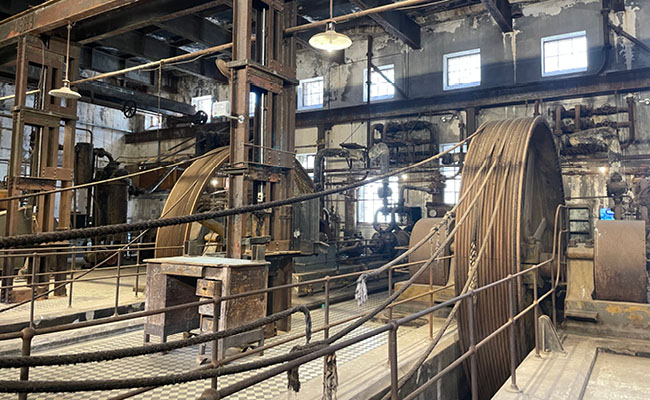
Not for vegetarians
Strolling from the bus station to the riverside facility, you realise the city centre is a side-show. The real business happened close to where the factory manager lived in what resembles a randlord mansion. Sure, there are pleasant parks (one even has a bandstand), and a promenade of sorts next to the brown water of the immense river, and some statues and epitaphs on the way, but it all guides you in the direction of that big plant with its industrial-scale brick chimney and those assembly lines dedicated to meat processing.
A brutal place for sure. Imagine not lemmings lock-stepping over a cliff, but stampedes of cattle on a death march into the largest abattoir conceivable. A steampunk version of Henry Ford’s assembly lines, only these conveyors were for disassembly. Taking beasts apart to supply the needs of an ever-growing population in far-off lands. Entire animals shrunk and shipped off in tiny caskets with screwtops. Obviously you feel pathos for the slaughtered animals. You hope it was quick, clean and painless.
So, ja, not exactly a place to take the kids, or a vegan love-interest on a second date. But how fascinating. The scale of the whole enterprise! A greenfields operation put together without a single computer simulation. A flat piece of earth turned into something incredibly productive. Would it be a stretch to call it the first upcycling initiative of mega-proportions? All that meat (and bones) finally put to good use.
Visualising those loaded riverboats, thinking of how – much like Kimberley – this settlement sported electric lights when people in the capital were still kindling candles, and retracing the voyage of each jar of nutrients from here to wherever, is dizzying. Like the earliest ghost of globalisation appearing hauntingly before you.
The commercial arrival of high-quality transportable protein had a powerful knock-on effect. It instantly created opportunities for adventure. And for avarice. No wonder explorers reached both the North and the South Pole only a few decades later. But it also supercharged warfare. Are you at all surprised that these beef extracts were an important staple in the trenches of World War I? The same factory, for a good part of the hostilities, supplied both sides of the conflict – it was after all German science and British capital that founded the business.
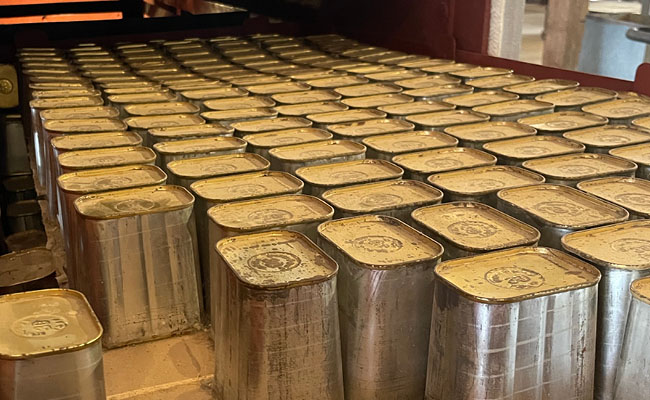
The South African link
Fray Bentos is one of those sights that’s not about the seeing, but about the imagining. The museum is iffy. The factory is underwhelming. There are some photo-opportunities in the old boiler room and an interesting anecdote or two – those marble floors were not for the sake of luxury, but were seen at the time as the best insulation against electrical shocks. All and all, though, it’s a tourist trap, and a touristless one at that!
So what do you want, all by your lonesome, in such a location? You obviously crave something familiar. You want a link to the home you now miss as you lament the excitement of early Joburg and Kimberley, those industries that are no more, and the heydays gone by.
But then, after reading your fill of Spanish inscriptions, you find it! In a forgotten corner of the museum, not part of the main exhibition but mounted on the wall of the old offices, hangs a framed poster – marketing material from the turn of the previous century. It lists the “Cape Colony” as one of the depots for Fray Bentos’s products, and then reads:
“The British Government recognised the superiority of LEMCO by ordering a larger quantity for use by the South African Field Forces than of any kindred preparation.”
At Spioenkop and Magersfontein and all the way marching to Pretoria, biscuits were being spread and broths were being brewed with processed meat from these fields. Fuel for fighting.
On the other side of those battles, a more artisanal product was being put to similar use. Reading the words of that poster, you crave not the beef extracts of Fray Bentos, but good old biltong.
And so, to pay homage to the fallen – the animals of the pampas and the soldiers and civilians in South Africa – you head for the closest steakhouse. Within walking distance, a restaurant with a river view offers the experience you would know as an Argentinean grill, but which is just as common on this side of the river. Have a glass of tannat – Uruguay’s “national grape” that delivers a wine as heavy (and as interesting) as the Unesco site next door – and order the asado de tire (beef rib). It’s a tough cut of meat, but incredibly flavourful. The closest Fray Bentos will get to biltong.
Getting there
There are no direct commercial flights to Uruguay, unfortunately. Fly Latam from Joburg to Sao Paulo and connect from there to Montevideo. If you are in Argentina for some reason, take a ferry from Buenos Aires to Colonia de Sacramento. Bus is the best and most affordable long-haul transport in Uruguay. Comfy, clean and conveniently located, the bus terminals are in the centre of the cities or towns you will visit.
In Montevideo, pick accommodation close to the Rambla. From there you can take city buses to all the sights.
If you have enough time
- Visit a wine farm. There are options very close to Montevideo. And get ready to drink gallons of tannat. The grape is originally from the south of France, but Uruguayans claim it as their own. If you want a dry run before you go, try a South African take on it: Lowerland produces its Tolbos Tannat near Prieska in the Northern Cape.
- Take a walk through the cobblestone alleys of the old town of Colonia de Sacramento. It’s a tourist trap, but it does offer a pleasing view of Buenos Aires on the other side of the Rio de la Plata. Scores of skyscrapers appear half-submerged in the water.
- Go see the world’s largest living rodent, the capybara, in its natural habitat.
- Find a plaza where a tango troupe meet to practice their moves. Though the dance is associated more with Buenos Aires, Montevideo also claims it as part of its cultural heritage. Maybe it does take two cities to tango.
Sign up to Currency’s weekly newsletters to receive your own bulletin of weekday news and weekend treats. Register here.
